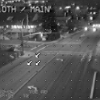Free Online Productivity Tools
i2Speak
i2Symbol
i2OCR
iTex2Img
iWeb2Print
iWeb2Shot
i2Type
iPdf2Split
iPdf2Merge
i2Bopomofo
i2Arabic
i2Style
i2Image
i2PDF
iLatex2Rtf
Sci2ools
Publication
Detecting Motion Patterns via Direction Maps with Application to Surveillance
Detection of motion patterns in video data can be significantly simplified by abstracting away from pixel
intensity values towards representations that explicitly and compactly capture movement across space
and time. A novel representation that captures the spatiotemporal distributions of motion across regions
of interest, called the ‘‘Direction Map,” abstracts video data by assigning a two-dimensional vector, representative
of local direction of motion, to quantized regions in space-time. Methods are presented for
recovering direction maps from video, constructing direction map templates (defining target motion patterns
of interest) and comparing templates to newly acquired video (for pattern detection and localization).
These methods have been successfully implemented and tested (with real-time considerations) on
over 6300 frames across seven surveillance/traffic videos, detecting potential targets of interest as they
traverse the scene in specific ways. Results show a...
| Added | 12 Apr 2010 |
| Updated | 12 Apr 2010 |
| Type | Journal |
| Year | 2009 |
| Where | CVIU |
| Authors | Jacob M. Gryn, Richard P. Wildes, John K. Tsotsos |
Comments (0)



